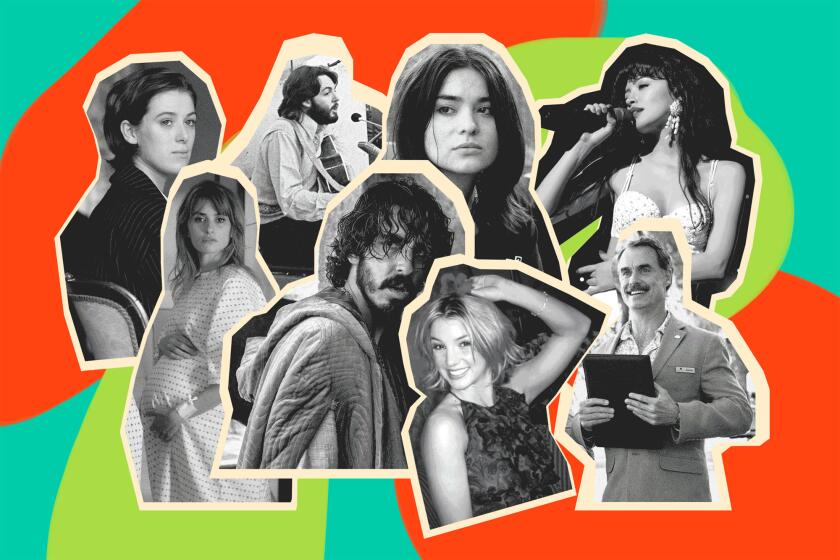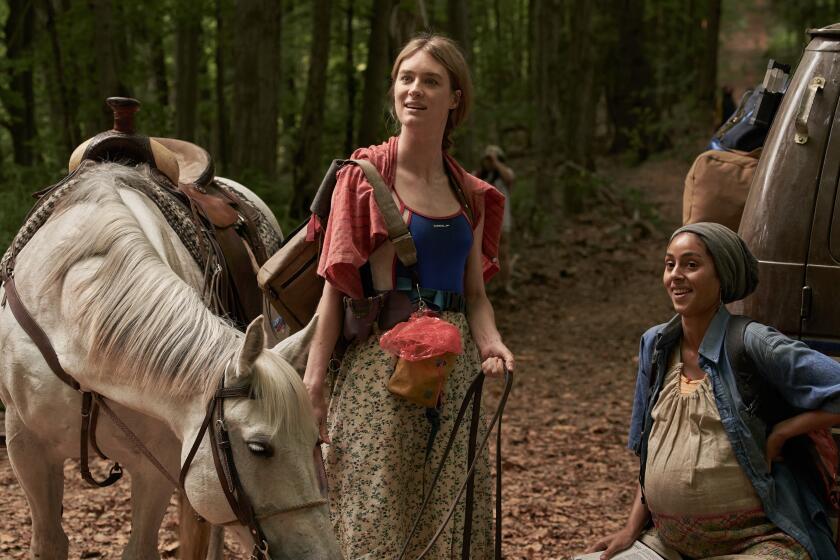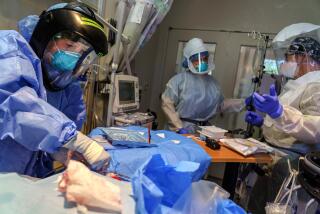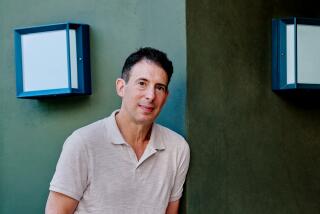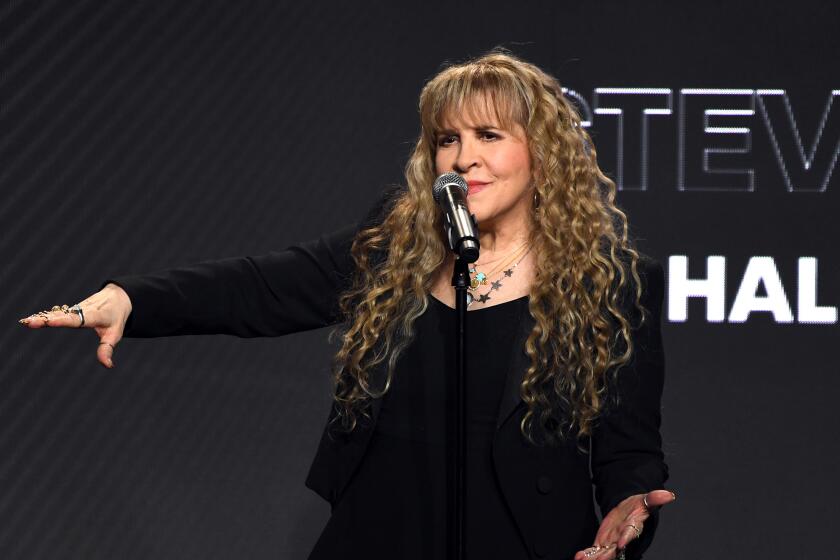There is no script to get us ‘back to normal.’ ‘Normal-adjacent’ will have to do
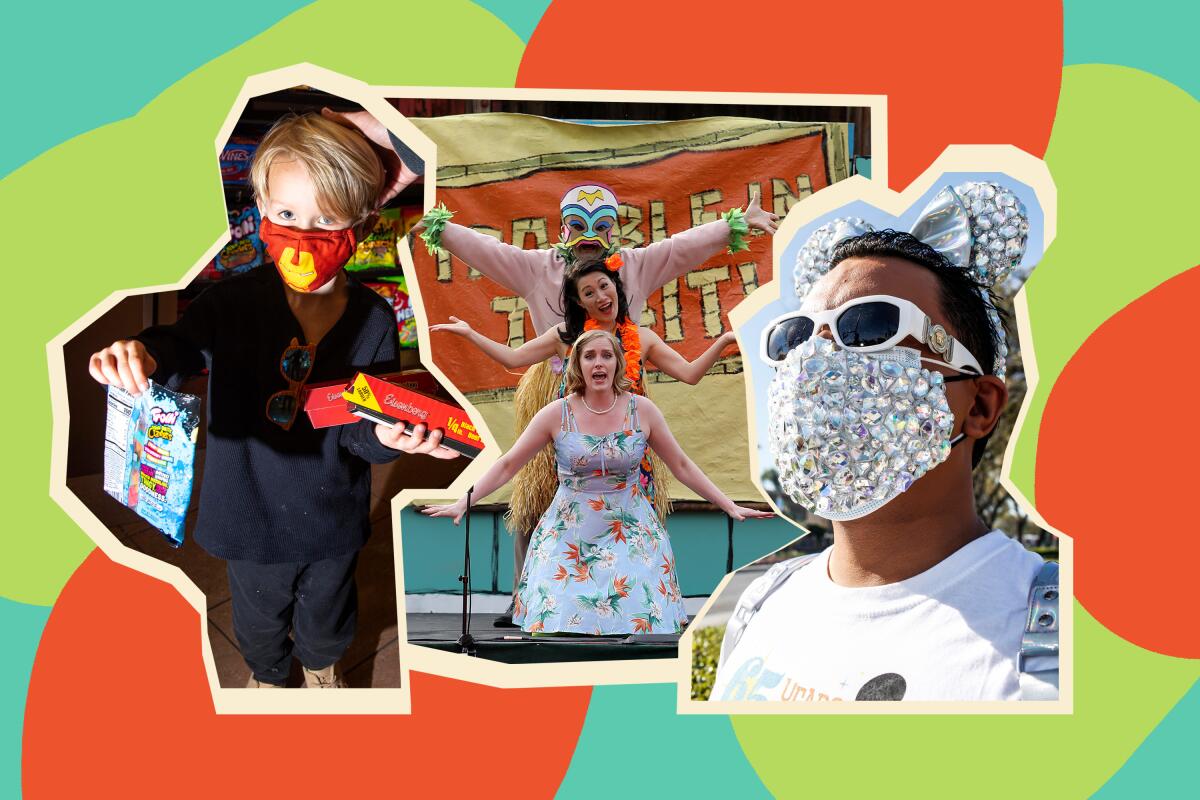
- Share via
I was recently invited to a small but fancy holiday party, and I have to admit I was a bit thrown. Not by the fact of the party, which was lovely, or the “vaccinated only” requirement on the invitation, which was necessary. No, it was the 8 p.m. start time that was so startling.
It just seems so late to be venturing out, right? Or am I the only one who has gotten used to being in bed, or at least settled in front of some screen, by 10? And what does one wear to a fancy party anymore? My good shoes are literally covered in dust at the back of the closet.
Just when I was about to collapse on my bed in defeat, I thought of Dania Ramirez. If her character in Netflix’s “Sweet Tooth” could survive being holed up in her office for months and then begin life anew alone at the local zoo, I could damn well dust off my party shoes and celebrate a holiday season that, if not “back to normal,” is “normal adjacent.”
Now, of course, I’m grateful I got to go to a party at all — a week or so later and it might have been canceled. The threat of the Omicron variant has already shut down some holiday festivities, including, most recently, Center Theatre Group’s production of “A Christmas Carol.”
Bah, humbug? Nah. This holiday season will still be better than last year’s. Omicron missed Hanukkah entirely, and neither mask mandates nor social distancing is going to stop “Spider-Man: No Way Home.” This new variant may have a name worthy of a Michael Crichton novel, but with any luck (and rigorous attention to CDC recommendations) this is another one step back of the kind that has inevitably followed every two steps forward in our fight against COVID-19.
The best of the year’s TV shows, movies, music, games, theater, art, architecture and more.
Yes, it would have been nice if the end of 2021 marked the end of the pandemic. Instead we remain stuck in this odd place between full-blown crisis and “all clear.” As this version of life as we knew it stutters through some often-perilous rewrites, we are once again unsure what to do. Can we travel? Host parties? Visit family? Go to church/museums/the theater?
“I’ve forgotten how to schmooze,” a friend lamented at an autumn work event. Is schmoozing even allowed, she wondered; what was once known as “working the room” seemed potentially dangerous even among a negative-test-required crowd.
Obviously, there have been people ignoring all the rewrites, flouting precautions and rejecting medical solutions throughout the pandemic — that’s one reason the pandemic is still with us. For responsible citizens, however, mid- to late 2021 was a time of “first since the pandemic” emergence. First in-theater movie, first dinner party, first concert or play, first visit with grandma, first air travel, first gym workout, first day back at the office, first drag brunch with mom. (OK, that might be a first first.)
To have some of those new freedoms restricted or called into question again — and at Christmas! — is a monumental drag. COVID ennui is real, just like pandemic fatigue, depression, regret and impatience are real. Like characters in most post-apocalyptic tales, we are haunted by flashbacks and references to the Time Before — vague recollections of a time when shows didn’t close, heading out on a Saturday night as late as 9 (or even — gasp — 10 p.m.) was no big deal and a nearby cough didn’t send everyone into a state of panic.
Unlike those dystopian characters, however, we are not facing the kind of “extinction event” that popular fiction, including “Sweet Tooth” and the recent HBO Max series “Station Eleven,” demands from pandemics.
Far too many continue to face life-or-death situations, soul-rupturing sorrow and — certainly for healthcare workers — frustrated fury. But for most of us, the changes are far more subtle. “It could be worse” shouldn’t be the bar for any situation, global or personal — but one reason post-apocalyptic fiction is so popular even during a pandemic is because, you know, it could be worse. Our streets are not gridlocked with empty cars of the suddenly dead; the power grid and internet is still up and running and no one has turned into a zombie or given birth to a kid with antlers (not that there’s anything wrong with that!).
And at least this time we know what to do: Get vaccinated or boosted, wear masks, wash your hands. Get tested if you think you’re sick or have been exposed and quarantine if necessary. Don’t complain about any new measures that are instituted for your safety. Many of those above-mentioned firsts required a lot of planning, card/test-result uploading and often a lot of time online. But once you’re there, Disneyland is still reassuringly Disneyland, even if more people are wearing masks than mouse ears.
In post-apocalyptic fiction, you know which characters are going to survive by the speed with which they absorb a new situation. Denial is deadly; moping and arguing don’t help either. Life is far from “back to normal,” and if we keep pretending it is or expecting it to be, we will live in a state of constant frustration, with even more people being ejected from commercial aircraft or, even worse, dying in car accidents.
For the moment, we can still visit museums and indoor restaurants, go to parties, ice skating rinks and concerts, but that could change — and then eventually change back. Once again, we have to deal with social conundrums that a month ago seemed less urgent — do we tell the lady in Ralph’s to freakin’ put on a mask, or the loud-talking guy in line to pull his up over his nose? (Seriously, if your face is too big for your mask, get a new mask.) Do we say something when it appears that no one is checking vaccination cards at a venue or airport gate where proof of vaccination is required?
After more than a year, my husband and I have a movie date (“Together Together”) and it was very weird and extremely wonderful.
Even if Omicron turns out to be less of a threat than is feared, it will probably be years before some of us stop scrutinizing crowd sizes and spacing, wearing masks in stores and on public transportation and glaring at anyone who is visibly ill. (Remember when we all laughed as Meryl Streep’s Miranda Priestly haughtily refused to touch anything her sniffling assistant handed her? Who’s laughing now?)
In fiction, pandemics are always fast-moving — 80% of the world wiped out in seven days or whatever — which makes the narratives of survival and reemergence far more dramatic and definitive. This pandemic has not, thank God, left a scant few survivors to scavenge and rebuild in a world filled with zombies and lacking cellphone service.
But it has left us without a mythology to reference or a blueprint to follow. (The last major pandemic was subsumed, at least in our storytelling, by World War I and the generally higher mortality rates of 1918.) So here we are, at least narratively and socially speaking, confronting a world that is still not and may never be quite like the one it was before and unsure how to act.
The good news is we can do it, are doing it. Post-apocalyptic stories may not be helpful in the details, but they exist for a reason — to assure us that we can survive anything. It’s upsetting to cancel a trip to Europe because the changing restrictions are worrisome, but at least no one’s having to give birth without making a sound like Emily Blunt in “A Quiet Place” (which I realize is not a pandemic-based story but still). Wearing a mask to a concert can mess with your look, but at least you have far more live entertainment options than those poor folks waiting for a traveling company of Shakespearean actors to show up once a year in “Station Eleven.”
Remember last year, when so many things were closed or canceled, when there was no place to even hear a choir sing? This year we were able to watch the L.A. Master Chorale, and if our singalong with “Messiah” was canceled thanks to Omicron, it was replaced with outdoor carol singing. Sure, the miracle of the vaccine was dampened by those who wouldn’t or couldn’t participate, but if life isn’t “back to normal,” it is markedly better than it was last December.
Here’s hoping it stays that way.
Author Emily St. John Mandel was not involved in the adaptation of her hit novel. But series creator Patrick Somerville had her blessing to change it.
More to Read
The biggest entertainment stories
Get our big stories about Hollywood, film, television, music, arts, culture and more right in your inbox as soon as they publish.
You may occasionally receive promotional content from the Los Angeles Times.
